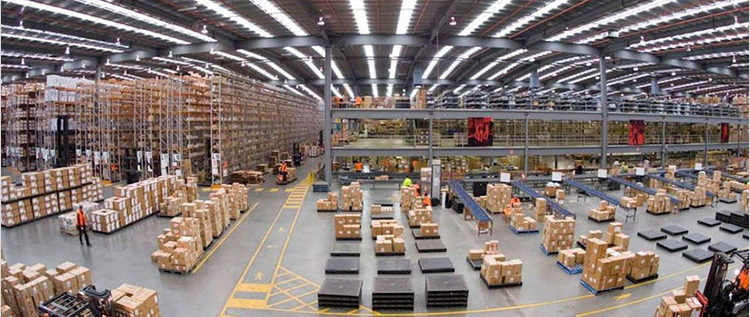 With abundant equity targeting Australia and available stock in core markets tightening, investors are geographically diversifying. Metropolitan Sydney is one area that has gained significant interest from investors. Outside of Sydney, investors are increasing their focus on Brisbane’s office market.
Singapore
With abundant equity targeting Australia and available stock in core markets tightening, investors are geographically diversifying. Metropolitan Sydney is one area that has gained significant interest from investors. Outside of Sydney, investors are increasing their focus on Brisbane’s office market.
Singapore
 A fresh look at decentralized opportunities is warranted as high prices persist and new supply eases in the core CBD. This will continue to widen the differential between the CBD and non-CBD locations. The advantage of being less costly, combined with higher availabilities, provides compelling values for some cost-sensitive companies.
Tokyo
A fresh look at decentralized opportunities is warranted as high prices persist and new supply eases in the core CBD. This will continue to widen the differential between the CBD and non-CBD locations. The advantage of being less costly, combined with higher availabilities, provides compelling values for some cost-sensitive companies.
Tokyo
 Similar to the growing interest in new segments and styles of investing in all global regions, investors in Japan can play into the country’s demographic themes. With Tokyo’s population growth bucking the country’s declining birth rate, the continued shift of inhabitants into the capital is expected to expand the traditional Tokyo core market to include submarkets with positive growth stories. Such as the Shinagawa area and Ikebukuro submarket that have the potential to elevate to core status but at more appealing price points.
Hong Kong’s Kowloon East
Similar to the growing interest in new segments and styles of investing in all global regions, investors in Japan can play into the country’s demographic themes. With Tokyo’s population growth bucking the country’s declining birth rate, the continued shift of inhabitants into the capital is expected to expand the traditional Tokyo core market to include submarkets with positive growth stories. Such as the Shinagawa area and Ikebukuro submarket that have the potential to elevate to core status but at more appealing price points.
Hong Kong’s Kowloon East
 Outside core office areas, Kowloon East is reaping the benefits on the back of government policy support, improving transportation infrastructure and the increasing supply of Grade A office buildings. Under the current plan, Kowloon East is envisioned to be the city’s second CBD, with the total Grade A office stock expected to overtake that in Central over the next 10-15 years.
Shanghai
Outside core office areas, Kowloon East is reaping the benefits on the back of government policy support, improving transportation infrastructure and the increasing supply of Grade A office buildings. Under the current plan, Kowloon East is envisioned to be the city’s second CBD, with the total Grade A office stock expected to overtake that in Central over the next 10-15 years.
Shanghai
 While a shortage of quality office spaces and subsequent rental increases in the core CBDs have curtailed existing office expansion and raised occupation costs for many occupiers, fast-maturing emerging markets are set to be game-changers in Shanghai’s office market. These locations will provide alternatives to occupiers as well as investment opportunities.
Seoul
While a shortage of quality office spaces and subsequent rental increases in the core CBDs have curtailed existing office expansion and raised occupation costs for many occupiers, fast-maturing emerging markets are set to be game-changers in Shanghai’s office market. These locations will provide alternatives to occupiers as well as investment opportunities.
Seoul
 With core office assets hard to source, Korea’s institutional investors are showing interest in non-core markets. Sangam Digital Media City (DMC), Pangyo and Bundang have emerged as viable alternative office locations. Pangyo Techno Valley in Seongnam, Gyeonggi Province, is positioned to be South Korean’s innovation cluster hub specializing in IT, biotechnology, media content and nanotechnology.
Emerging Markets
The region’s emerging markets will offer investors the opportunity to tap into its long-term growth fundamentals which will become increasingly viable due to sustained reforms and economic initiatives.
Philippines
With core office assets hard to source, Korea’s institutional investors are showing interest in non-core markets. Sangam Digital Media City (DMC), Pangyo and Bundang have emerged as viable alternative office locations. Pangyo Techno Valley in Seongnam, Gyeonggi Province, is positioned to be South Korean’s innovation cluster hub specializing in IT, biotechnology, media content and nanotechnology.
Emerging Markets
The region’s emerging markets will offer investors the opportunity to tap into its long-term growth fundamentals which will become increasingly viable due to sustained reforms and economic initiatives.
Philippines
 Philippines is still projected to be a stellar performer in the Asia Pacific region for the coming years, despite concerns over a recent shift in foreign policy direction. This is due in large part to the economy being heavily driven by local demand and consumption. The push for more infrastructure and industrial developments are firming up interest in areas outside of Metro Manila like Laguna, Cavite, Batangas, and Mandaue, Cebu. On the real-estate front, high-end and prime office spaces benefit from stable demand, largely driven by the (IT-BPO) industry.
Bangkok
Philippines is still projected to be a stellar performer in the Asia Pacific region for the coming years, despite concerns over a recent shift in foreign policy direction. This is due in large part to the economy being heavily driven by local demand and consumption. The push for more infrastructure and industrial developments are firming up interest in areas outside of Metro Manila like Laguna, Cavite, Batangas, and Mandaue, Cebu. On the real-estate front, high-end and prime office spaces benefit from stable demand, largely driven by the (IT-BPO) industry.
Bangkok
 Given its proximity and close economic ties to the CMLV (Cambodia, Myanmar, Laos, and Vietnam) economies, Thailand has attracted several foreign multinational corporations (MNCs) keen to establish a base for expansion in Indochina. Demand for office spaces in Bangkok has remained robust as a result of sustained foreign investments, with the low supply pipeline driving tight availabilities and rent increases into the medium term. The extension of the city’s mass transit train routes will continue to sustain interest in residential developments.
Jakarta
Given its proximity and close economic ties to the CMLV (Cambodia, Myanmar, Laos, and Vietnam) economies, Thailand has attracted several foreign multinational corporations (MNCs) keen to establish a base for expansion in Indochina. Demand for office spaces in Bangkok has remained robust as a result of sustained foreign investments, with the low supply pipeline driving tight availabilities and rent increases into the medium term. The extension of the city’s mass transit train routes will continue to sustain interest in residential developments.
Jakarta
 Indonesia economy’s long-term structural fundamentals remain intact and the government’s reform packages together with higher public spending and infrastructure development are boosting the country’s investment climate and increasing the demand for retail space. The manufacturing sector will require more warehouse and logistics space. While Jakarta’s office sector is currently oversupplied, the imbalance is expected to tilt after 2018 due to attractive valuations, low costs of doing business and increasing foreign capital
Kuala Lumpur
Indonesia economy’s long-term structural fundamentals remain intact and the government’s reform packages together with higher public spending and infrastructure development are boosting the country’s investment climate and increasing the demand for retail space. The manufacturing sector will require more warehouse and logistics space. While Jakarta’s office sector is currently oversupplied, the imbalance is expected to tilt after 2018 due to attractive valuations, low costs of doing business and increasing foreign capital
Kuala Lumpur
 With the capital’s first Mass Rapid Transit (MRT) line expected to get completed and a further two added by 2021, these transport links will be a key market drivers. The southern part of the capital will be a major beneficiary. As convenience is a key selling point, integrated and transit-oriented developments will be favoured. The real-estate values will benefit from the government’s sustained efforts to raise the level of economic development and income in the country.
Vietnam
With the capital’s first Mass Rapid Transit (MRT) line expected to get completed and a further two added by 2021, these transport links will be a key market drivers. The southern part of the capital will be a major beneficiary. As convenience is a key selling point, integrated and transit-oriented developments will be favoured. The real-estate values will benefit from the government’s sustained efforts to raise the level of economic development and income in the country.
Vietnam
 Vietnam displays many of the characteristics of its Asia-Pacific neighbours like legal titles in the form of 50-year land leases granted by the state, regulatory and tax environment, real-estate market cycle of controlled expansion and Grade A office yields that are in line with risk-free rate spreads. The adoption of revised banking regulations have acted as a catalyst for real-estate owners to move their business forward encouraging more cross-border investment activity as a result.
India
Vietnam displays many of the characteristics of its Asia-Pacific neighbours like legal titles in the form of 50-year land leases granted by the state, regulatory and tax environment, real-estate market cycle of controlled expansion and Grade A office yields that are in line with risk-free rate spreads. The adoption of revised banking regulations have acted as a catalyst for real-estate owners to move their business forward encouraging more cross-border investment activity as a result.
India
 Long considered as one of the hottest “emerging” real-estate investment destinations, India is poised to enter the list of “core” investment destinations. Traditional markets (Mumbai, Delhi National Capital Region and Bengaluru) continue to deepen and secondary markets (Chennai,
Hyderabad and Pune are strengthening. New markets will open up along the industrial nodes and opportunities are developing in industrial, warehousing and logistics assets. Though Bengaluru and Hyderabad may seem to be the most attractive office markets, investors are actively scouring deals in Chennai, Gurgaon, Mumbai Noida, and Pune.
A Cushman & Wakefield Research
Long considered as one of the hottest “emerging” real-estate investment destinations, India is poised to enter the list of “core” investment destinations. Traditional markets (Mumbai, Delhi National Capital Region and Bengaluru) continue to deepen and secondary markets (Chennai,
Hyderabad and Pune are strengthening. New markets will open up along the industrial nodes and opportunities are developing in industrial, warehousing and logistics assets. Though Bengaluru and Hyderabad may seem to be the most attractive office markets, investors are actively scouring deals in Chennai, Gurgaon, Mumbai Noida, and Pune.
A Cushman & Wakefield Research



















